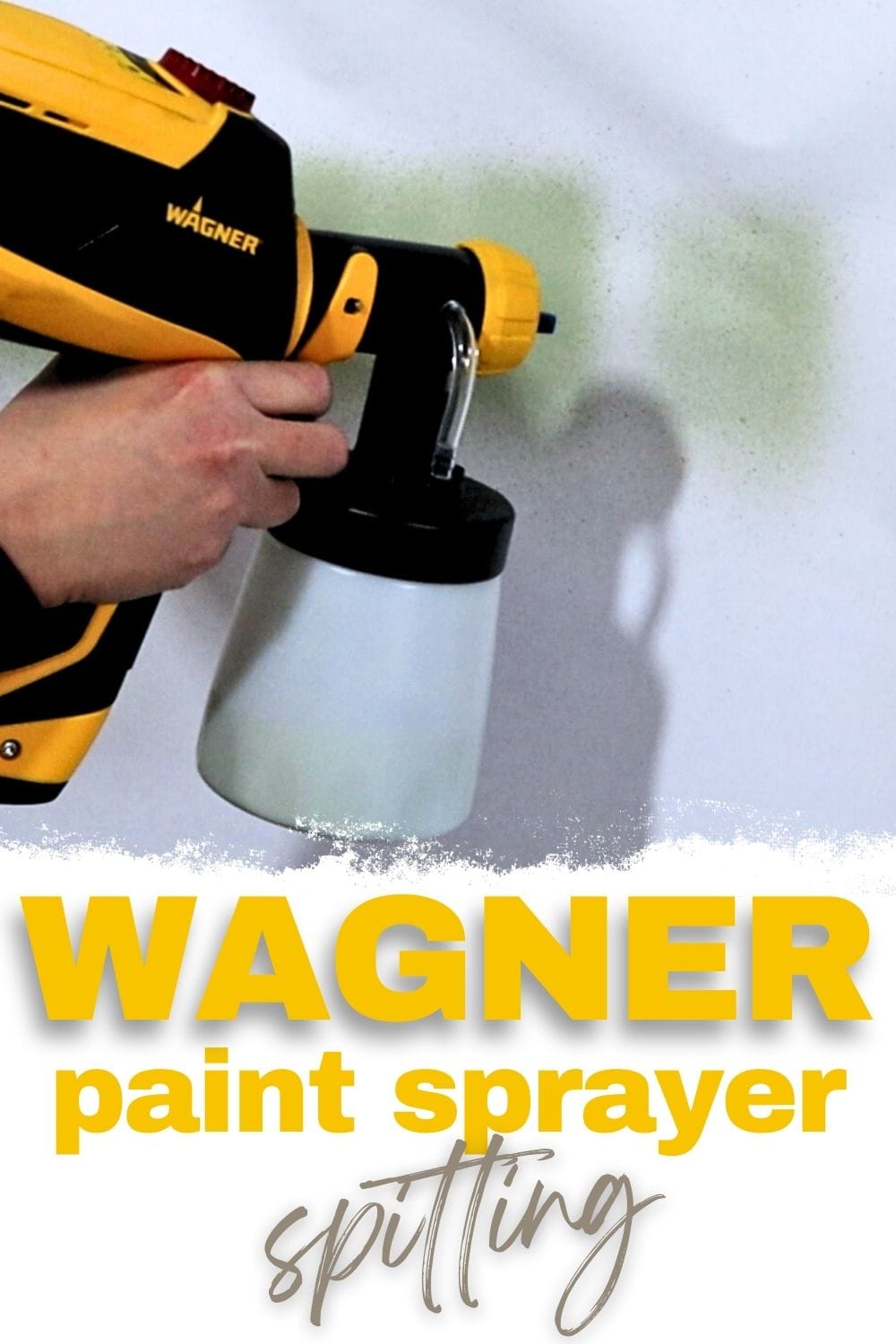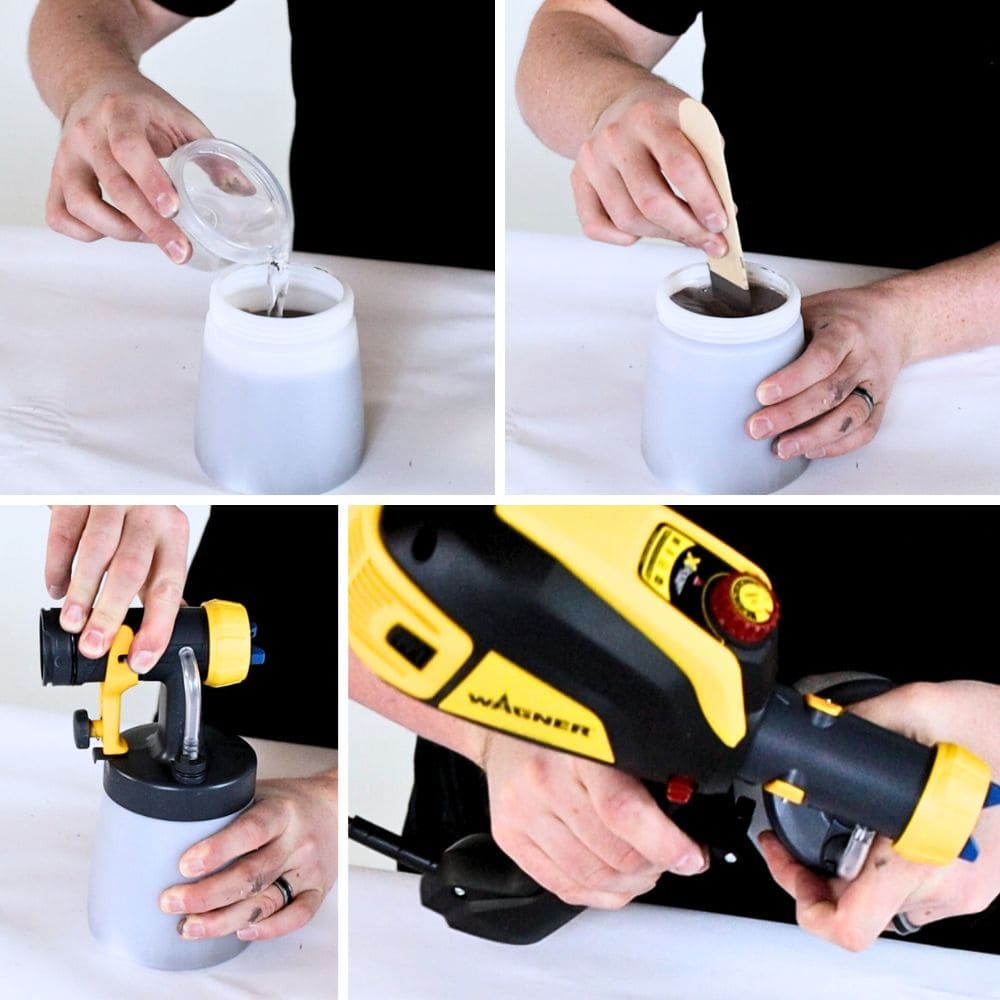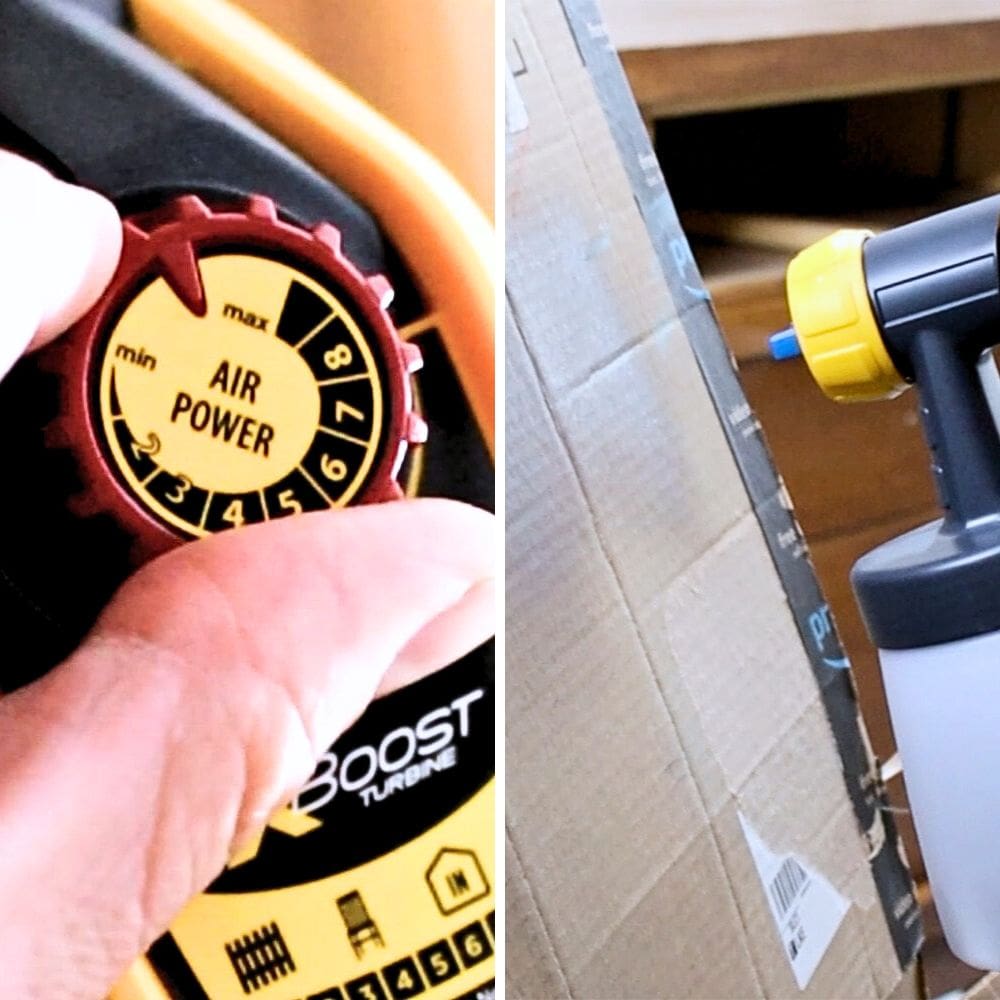Wagner Paint Sprayer Spitting
If you’ve ever experienced your Wagner paint sprayer spitting, then you know the frustration that comes with it. It’s always a bummer when your trusty tool starts acting up, especially in the middle of a project. You get small globs of paint on your work, ruining the work you’ve done so far.
So let’s discuss why your Wagner paint sprayer might be spitting and how to fix it. You should know how to troubleshoot this issue, especially if you’re going to use a paint sprayer on furniture for a long time.

Painting with a paint sprayer has many benefits, from saving time to getting a smooth, professional finish. That’s why it’s one of the popular painting techniques for furniture. Having one really makes a difference in your painting game.
But just like any tool, your Wagner paint sprayer might run into a few hiccups here and there. One of the most common issues is paint spitting. It’s a messy problem that can interrupt your painting flow and even waste some of your paint.
So let’s break down possible scenarios where your paint sprayer might start spitting, along with some simple solutions to get you back on track. Whether it’s a simple clog or a more complex issue, we’ll cover all the bases for you to troubleshoot and fix your Wagner paint sprayer.
As an Amazon Associate, I earn from qualifying purchases. I also may earn from other qualifying purchases with other companies or get free product to review and use. All opinions are my own.
Paint is Too Thick
The first scenario is when the paint in your paint sprayer is too thick. The paint could be clogging the nozzle and causing it to spit. This is why I personally like thinning most if not all the paints I spray. This not only prevents the spitting, but it also helps the paint to look better and more professional.

If you just use thick paint as is, the spray can come out very textured, which is not ideal for that smooth finish you want. Unless that’s the look you’re going for, I recommend thinning the paint. It’s very easy to do, and it could save you a lot of headaches later on.
So thin your paint with either water or mineral spirits – you can learn more about how to thin paint for a Wagner sprayer here based on the type of paint you’re using. If you have a FLEXiO model, check out how to thin paint for Wagner FLEXiO Sprayer in this post.
Clogged Paint Sprayer
Speaking of clogging, let’s further explore how your Wagner sprayer might be clogged. Aside from using a thicker paint, there may be other culprits causing the clogging. One common cause is not properly cleaning your sprayer after use. When paint dries inside the nozzle or tip, it can create blockages that lead to spitting.

Owning a paint sprayer comes with the responsibility of cleaning it after your project – yes, don’t leave the paint inside and think the sprayer will be fine, especially in the long run. Follow our guides on how to clean a Wagner paint sprayer and how to clean a Wagner FLEXiO sprayer to properly and thoroughly clean yours.
You should also strain your paint before pouring it into the sprayer’s container. This helps remove any particles or little objects that can block the nozzle. Yes, even super small particles can affect your sprayer’s performance. You can use a paint filter or mesh strainer for this step.
Air Settings Need to be Adjusted
You might also want to look into the air settings on your Wagner paint sprayer. It’s the X-Boost power dial on most FLEXiO models. Make sure to turn it up for thicker paints because they need more air speed to push the thicker paints out.

Test the air settings on scrap material first before spraying your furniture. You don’t want splattering or dripping paint on your project, so you need to do this first or you will risk ruining your piece. Adjust accordingly until you get a spray that feels right, then you can start painting.
Pulling Paint Sprayer Trigger
If you have a Wagner paint sprayer model that doesn’t have an on/off switch, and the paint spits when you pull the trigger back, here’s a small workaround.
Try pulling the trigger back – don’t aim it on your furniture yet! Alternatively, pull the trigger back only halfway to get the motor started, and then pull it all the way back for the paint to come out smoothly.

The sprayer tends to spit the paint out a bit if you pull the trigger back all the way before starting the motor. So be sure to follow this handy tip. You might need to practice since you’re not used to it, but you’ll get the hang of it in no time.
It’s important to note that this only applies to Wagner paint sprayer models without an on/off switch. If your model has one, simply turn it on before pulling the trigger back all the way. It’s a really convenient feature to have.
Can the type of paint affect how often my Wagner paint sprayer spits?
Absolutely! Different types of paint for furniture have different thicknesses and consistencies, which can greatly affect the performance of your Wagner paint sprayer. You may need to make some adjustments for a smoother painting session.
For example, thicker paints like latex or oil based paints may require more thinning to prevent spitting. Here’s more on thinning latex paint for Wagner sprayer if you’re going to work with this paint. Meanwhile, thinner paints, stains, and varnishes may not need as much thinning. So it’s important to know what type of material you’re working with and adjust your thinning technique accordingly.
The quality of your paint also matters. Cheaper, lower-quality paints may have more impurities or particles that can easily clog your sprayer, leading to more frequent spitting. Spending a bit more on higher quality paints can save you a lot of time and hassle down the line.
Additionally, the age and storage conditions of your paint can also affect its consistency and tendency to cause spitting. Old or improperly stored paints may have started to thicken or develop clumps, which can lead to clogging and spitting in your sprayer.
You should also not leave paint in your sprayer too long. If you’re curious how long can you leave paint in a Wagner sprayer, check out our post to know!
These are just some of the usual reasons why your Wagner paint sprayer could be spitting. The key is understanding how different factors can affect your sprayer’s performance, so you can troubleshoot and avoid these issues in the future.
Thinning thicker paints, adjusting air settings, and cleaning your Wagner sprayer properly are all important steps to stop spitting and clogging for a smooth painting furniture process. So the next time you encounter this Wagner paint sprayer spitting issue, you’ll know exactly what to do!
More Paint Sprayer Tips
- Wagner Paint Sprayer Tips
- Best Paint Sprayer For Home Use
- Paint Spray Gun For Beginners
- Best Latex Paint Sprayer
Follow us on YouTube to get more tips for painting furniture.
Or share your project with us on our Facebook Group and be part of our community. See you there!
